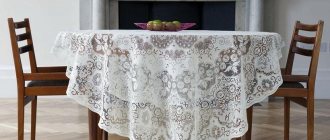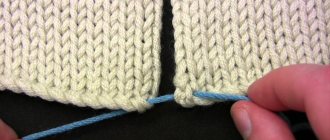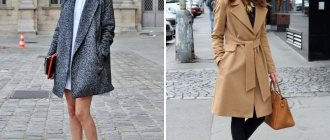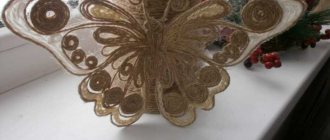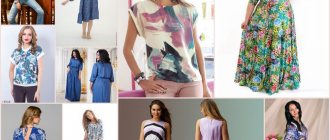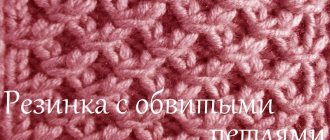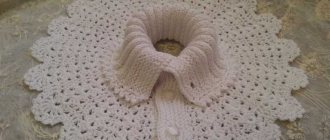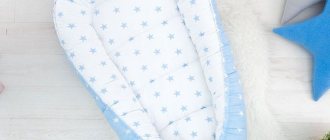We select sources of creation
The basis for real creativity is accessible and inexpensive (in some cases, free) papyrus. What properties of parchment should you focus on when weaving paper strips:
- newspaper is flexible, loose, and easy to work with, but loses in the strength of the product;
- the glossy base has a rather dense structure, which makes it possible to obtain a durable material;
- office product is the most reliable material due to its high density, it is beautifully colored;
- the tape (for cash registers) is also remarkably easy to paint; the extremely thin and no less strong component is inferior in availability to all similar samples;
- Wrapping parchment is acceptable for making great crafts.
Adviсe! You can use any sheet format, but not less than A4, and the quality must have a uniform structure and thickness.
How to care for reps?
The features of caring for this fabric are determined by the raw materials that are included in its composition. Exclusive silk reps deserve to be handled with care, and it is best to have them professionally dry cleaned. A small item can be washed by hand in a warm solution of mild detergents, then dried flat and ironed from the inside out through a liner.
Article on the topic: Do-it-yourself Slavic amulet doll: Desire for good luck
Cotton fabric can be easily tidied up at home, although you should also remember about the possibility of shrinkage. It is better to wash in warm water, but this fabric tolerates all machine modes, as well as high temperatures when ironing. If you wash grosgrain ribbon, be careful not to let it become deformed when ironing.
As for woolen fabrics with ribs, they can stretch when wet. Therefore, they should be washed either by hand or on a delicate cycle, dried only horizontally, and not ironed unless absolutely necessary. If creases form, it is better not to iron such fabric, but to treat it with a steamer.
Slicing manners
A4 format is the most acceptable size for cutting braid. Therefore, if you have a canvas of a different size, bring it to the required standard. Next, let's start with the rulering; perform this step as carefully and accurately as possible, do not skimp on time. Now you can cut.
Consider the format of the ribbons: 5 cm x 30 cm are good for small-sized souvenirs. Larger pieces are made from pieces ranging from 7 cm to 9 cm wide.
You can deal with this much faster if you put everything in a stack and choose the right cutting equipment. A considerable layer is cut with a thick blade.
What kind of material is this?
To obtain a ribbed fabric, the weave is made in such a way that the warp thread intertwines more than two weft threads. Such reps, which have longitudinal scars, are called basic (emphasis on the second syllable). Another weaving method is used, in which the weft thread is strengthened. In this case, the scars will have a transverse direction, and the material is called weft. Both fabrics have an interesting texture and great strength. They are produced plain (or bleached) and printed.
Until the century before last, reps were made only from twisted silk threads, while the thinner fabric that was used to make clothes was called “rips” (as opposed to furniture) . Subsequently, this material began to be made from cotton and wool. Cheaper fabric gradually became more common, and by the beginning of the 20th century, ribbed silk textiles had become a rarity. The last surge in fashion for this material occurred in the middle of the last century, when women began to wear trousers, as well as tight-fitting dresses and voluminous skirts. Since then, reps have not become a leading brand, although it continues to be in demand to this day.
Related article: Master class on weaving baskets from newspaper tubes with photos and videos
Elegant holiday basket
It is not difficult to create such desired beauty, since it is one of the simplest types of this art. Follow the manufacturing steps exactly and you will succeed.
Having placed a container (jar) of proper height on the cardboard, circle its base with a pencil and cut out two circles of the same size.
For the frame you will need approximately 16 pieces of twisted sticks.
Flatten the edge a little (about 3 cm).
Along the edge of the kug with glue applied, glue the segments with the flattened side and the second circle. Leave until completely dry.
Do a similar session with another braid, attaching it to the second circle.Next, we proceed as follows: insert the made plate from the right from the outside inward behind the nearest tube, and bring it out from the inside in the same way.
Weave until the rod runs out. If there is a need to continue, attach the next piece with a flattened edge and continue working until the basket reaches a certain height.
Insert the excess ends inside the object, cut them off and carefully glue them.
Paint the completed creative result with acrylic paint and apply three layers. Each coating must dry thoroughly. Decorate to your taste.
Enjoying cardboard
It makes unique trinkets. A few words about how to make a cardboard basket. This glassine is a good basis for such a homemade product.
Give the desired shape, install the bottom. The design can be a stem, or a linen pattern made of papyrus. Line the inside of the basket with film and attach the fabric.
You can weave beautiful fruits of inspiration from such a component by interacting with many technologies and using a fairly large number of types of this activity.
Simple circuits
A simple weave of fabric, known for several thousand years, is called such because... they are the easiest to work by hand, but are still popular.
Linen look
It is considered the toughest and most durable type of weave. It practically does not tear, is not prone to abrasion, and is not afraid of washing in hot water with bleach. The fabric fits very well and lends itself to sewing. For beginner tailors and seamstresses, this is the best start, as the edge does not fray or fray.
The linen look is characterized by a checkerboard pattern of threads. With it, the warp thread alternately interweaves each weft thread, which creates a sequential order.
If the plain weave is made from fibers of the same thickness, then the surface becomes even and smooth. In some cases, threads of different diameters are used. This type of fabric is characterized by ridges on one side.
There is also a weaving method called “crepe”. It is formed with high accuracy. This results in a very high-grain fabric. There is a slight roughness to the touch, which may give off a shine.
The linen look is woven from the following materials:
- Cotton. It produces calico, calico and cambric fabric.
- Linen. Canvas and trim.
- Silk. Georgettes, chiffons.
- Wool. Cloth.
This type of weaving serves as the basis for more complex patterns, as it can be modified by lengthening the floors and shifting them.
Twill look
Twill weave has many similarities with the previous type. However, there are 2 main differences:
- The report has a minimum of 3 threads. In plain weave, only 2 are found. The number of threads in the fabrics is decisive here, as it completely changes the quality of the final fabric.
- When moving to each next report, a shift occurs by 1 thread.
As a result, a characteristic diagonal scar is formed. It may vary depending on density. Increased grouping makes the scar steeper and more pronounced. As it decreases, it becomes less noticeable.
They are much denser, heavier, thicker in comparison with a linen stroke. Virtually indestructible. But at the same time it is slightly inferior to them in strength. It stretches well (especially when loaded diagonally) and drapes.
They are less convenient for cutting, since diagonally directed tension can distort the fabric. They are often made from cotton-wool mixtures.
Satin and satin types
They are distinguished by a pleasant, smooth surface and shine in the sun. The effect is achieved using a very rare weave of warp and weft. According to its qualities it is divided into 2 types:
- Satin weave fabric. It is formed if the outer side is represented by weft threads.
- Satin weave. The opposite of satin - the main threads are located on the outside.
Despite the softness, the material is very durable and wear-resistant. Resistant to hand or machine washing. Allows you to easily apply a design to the surface that does not deteriorate even with careless care.
To achieve gloss and brightness on the outside, extensions are made.
The weave is elastic. When stretched, it is not prone to tearing. At the same time, immediately after this it restores its original shape.
Traditionally, these types of weaves are made from natural silk with minor additions of other materials. But there are also purely cotton or linen fabrics.
It is important to note that satin is very similar to twill. The question may arise: “how is twill weave different from satin weave?” The answer is in their density and special diagonal stripes.
Unusual types of “knitting”
- In the formation of the main links of products, a simple type is most often used, accessible to novice lovers of unique handicrafts.
- The layer-by-layer knitting method gives the manufactured items strength. They are devoid of gaps in the panel.
- To weave in rows, you need to use three “straws” alternately and simultaneously.
- Square weave allows you to create a checkered pattern.
- Rope is a method that helps strengthen the edges of the sides of a creation both at the top and bottom, making its bottom a solid and solid object.
- Openwork has an impressive range of varieties. All sorts of schemes are successfully used when creating the intended image.
Attractive braid bookmark
Your preschooler will be able to handle the task quite well. The master class will show you how to make a braid out of paper. For such a thing, choose a strong color base (two shades will be enough), scissors and a glue stick. You should cut out two stripes of each color (for example, red and blue) 1.5 cm wide.
Step by step execution:
- lay out two red ribbons in the shape of a right angle and glue them in this position;
- Fold the blue stripes just below into a cross;
- we begin to weave an ordinary braid;
- carefully press the fold lines;
- Remove any remaining protruding pieces and own the original bookmark when reading your favorite book.
Identical developments
In this way, a colossal number of real masterpieces can be made. An example of this is the presentation of the topic: “Making woven napkins” at a labor lesson in the 4th grade.
In addition to achieving the goal (completing a task using a specific method), children consolidate previously acquired graphic skills, the ability to interact with a similar ingredient, develop accuracy, and creative imagination. Learn the cultural heritage and traditions of their ancestors.
Many beginning needlewomen are interested in how to make satin weaving and how satin weaving differs from it. This topic is studied in schools during labor lessons, specialized educational institutions, and universities.
Satin weave is the basic beginning of creativity and is accessible to almost every student. Such connections from papyrus matter form interesting patterns - these can be rhombuses, squares and other geometric shapes.
Obtaining such a canvas depends on the single overlaps and their location. In satin weaving, the most evenly laid single thread is observed. To create a satin paper twist, prepare two-color plates of different widths.
This is required to imitate weft and warp threads. In this matter, attentiveness, patience, accuracy are very important, but the main thing is to be able to correctly count the alternation of strips of thread. This knowledge is consolidated in labor lessons in the 5th grade, doing paper weaving using weaving technology.
Weaving from paper is clear proof that, having a great desire to create, it is quite easy to realize your desires by providing masterpieces made from ordinary newspaper.
Fabric structure
The fabric is a spatial mesh of rectangular or square cells formed by two mutually perpendicular systems of threads - warp threads located along the fabric and weft threads lying across the fabric. The different sequences of weaving the warp and weft threads in fabrics create various patterns - the warp and weft threads go around one another or overlap several threads at once, located either on the front or on the wrong side of the fabric. Weaving not only gives fabrics a different appearance, but also changes their properties. So, the more often the threads are intertwined, moving from the front side to the back side and back, the more they are connected to each other, the more stressed, the structure of the fabric is stiffer, and the strength is greater. Threads with frequent bends give the surface of the fabric a matte appearance, while long overlaps passing over several threads make it smooth and shiny. Fabrics whose surface is formed by long overlaps are more resistant to abrasion, but threads that are weaker in the overall structure of the fabric fray more easily along its cut.
All weavings are divided into four classes:
1) simple (smooth) weaves, giving the fabric a smooth, uniform surface;
2) finely patterned weaves with patterns of small figures formed by modification, complication and combination of smooth weave;
3) complex weaves formed from several systems of warp and weft threads;
4) large-patterned weaves that form various large patterns on the fabric; in simple large-patterned weaves, patterns are created by one warp and one weft, in complex ones - by several systems of warp and weft threads.
Rice. 1-6. Classification of weaving weaves.
The classification of weaving weaves is shown in Fig. 1-6. The graphic representation of the weave of fabric threads is called a weave pattern. The sketch is carried out on checkered paper, on which each vertical row of cells corresponds to the warp thread, and the horizontal row corresponds to the weft thread. Each cell represents the intersection of the warp thread and the weft thread. If at this intersection the base lies on top, i.e. the main overlap, the cell is painted over; with a weft overlap, the cell is left unpainted (Fig. 1-7).
Rice. 1-7. Weaving and its sketch on canvas paper
To form patterns, different numbers of warp and weft threads are required. The number of threads forming a complete weave pattern is called weave repeat R. A distinction is made between warp repeat Ro, determined by the number of warp threads forming it, and weft repeat R0, determined by the number of weft threads. The construction of weaving is carried out in a system of rectangular coordinates. In the theory of weaving, for each weave, a diagonal that builds it can be found, consisting of the main overlaps, from which all further readings are taken when constructing the weave. To symbolize the weave, the formula for the equation of a straight line is used:
where R is the amount of weave repeat; with asymmetrical repeat it may have a fractional designation. a is the angular coefficient characterizing the tangent of the angle of inclination of the diagonal coming from the point of intersection of the coordinate axes (depending on the value of the angular coefficient, the diagonal of the weave can be steeper or flatter); b - parameter indicating the amount of displacement of the second straight line in relation to the first (used when constructing weaves of finely patterned and complex classes); X and Y are the coordinate axes.
In Fig. 1-8, and shows the weave corresponding to the equation y5 = x. Index 5 indicates that the weave repeat is five. The absence of a number in front of x means that the angular coefficient is equal to 1. It is known that tg45° = 1, therefore, with a = 1, the diagonal of the weave in question is located at an angle of 45° (provided that the warp and weft threads are the same thickness and the thread density is the same in both systems ). The weave shown in Fig. 1-8, b, corresponds to the equation Y5 = 2x. It has a repeat equal to five and an angular coefficient equal to two, as a result of which the diagonal formed from the main overlaps is positioned more steeply.
Rice. 1-8. Weave pattern corresponding to the equations: a - twill weave y5=x; b - satin weave y5 = 2x
The direction of the diagonal is determined by the magnitude of the shift, which shows how many threads the overlap of the thread in question has shifted relative to the previous one. Both the construction of the weave pattern and the shift counting are carried out vertically. In Fig. 1-8, and the shift of the main overlaps occurs by one thread, in Fig. 1-8, b - for two threads. Thus, the digital expression of the slope value simultaneously shows the shift value.
- Forward
Paper weaving: photo of crafts
Please repost
0
